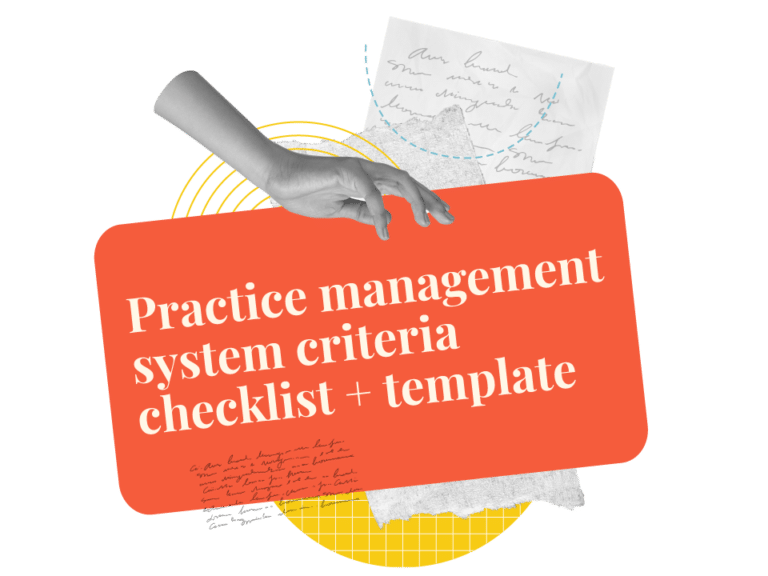When it comes to selecting a new practice management system (PMS), it's a big decision and investment, as this is the main software that you'll use in managing your practice every day.
The American Medical Association (AMA) and the Medical Group Management Association (MGMA) have created a simple roadmap to help physicians and their staff choose the right PMS for their practice.
In this guide, I've distilled their guidelines into a few simple steps, and I'll walk you through the steps from deciding to purchase a new PMS to making the final decision.
The important thing to do is to prepare your requirements ahead of time, so that when you speak with the software vendors and get a tour of their product, you're able to ask them about the features and functionality that matter most to you.
In my experience, if you show up to the software demos unprepared with your list of features that matter, the sales rep will end up walking you through a lot of really impressive features—some of which may not be applicable or useful to you specifically.
If you take the time to prepare in advance, it makes evaluating the options a lot easier once you start looking at products and proposals.
Here are the steps to prepare so that you can choose the right practice management software for your medical or clinical practice:
Step 1: Put together a PMS assessment team
Start by assembling a team of key staff members who use or are affected by the PMS. In smaller practices, this could be a couple of physicians and the practice administrator. Larger practices should include representatives from patient registration, coding and billing, and non-physician clinical staff. Having a diverse team will help you find the most suitable and cost-effective system for your practice while minimizing implementation time and cost.
Step 2: Evaluate your patient management and claims revenue cycle
Take a close look at your practice's workflow, from appointment scheduling to processing insurance claims and following up on payments. Mapping out this process will give you a clear understanding of the administrative tasks your ideal PMS should handle. Automating the claims revenue cycle can significantly reduce costs and increase revenue.
Here are some common examples of things that you would want the practice management system to handle.
- Appointment scheduling and management
- Patient registration and demographics
- Electronic medical records (EMR) and patient charting
- Billing and claims processing
- Insurance verification and eligibility
- Revenue cycle management
- Patient communication and engagement
- Document and file management
- Reporting and analytics
- Electronic prescribing
- Integration with laboratory and diagnostic systems
- Workflow automation and task management
- Inventory and supply management
- Patient portal and online access
- Compliance with HIPAA and other regulations
- Integration with other healthcare systems (e.g., electronic health records)
You might use a different application or software for a few of those, but hopefully that list helps you get started.
Step 3: Identify essential software features
Based on your analysis, determine the core functionalities your PMS should have.
Create a checklist of the most important features for your practice. I've included a downloadable checklist of features to get you started, which provides a framework for ranking the feature's importance from 1 to 3.
Consider your practice's minimum administrative requirements like billing, scheduling, and communication. Also, note any additional features you currently use and would like to explore with a new vendor. Think about the reports you need and the minimum requirements for a PMS vendor.
Make sure the software complies with federal and state regulations like HIPAA.
Step 4: Research PMS products and create a shortlist
Once you have your checklist, start researching different vendors and their products. You can narrow down your search by checking if a vendor's product is accredited, reading vendor surveys, seeking recommendations from peers, visiting trade shows or vendor websites, and even consulting with experts.
Share your checklist with potential vendors to help them understand your requirements.
Aim to shortlist around 3 to 10 vendors for a formal proposal.
Step 5: Request and review proposals from PMS vendors
Create a formal request for proposal (RFP) that outlines your practice's requirements. You can use a sample RFP provided in this guide to structure your document.
The RFP should include questions about the vendor's qualifications, functionalities, and features. You can attach your completed checklist for additional guidance. Send the RFP to your shortlisted vendors to gather their responses and compare them effectively.
Step 6: Select the best PMS for your practice
Review the responses you received from vendors and compare the features and costs of each product. Consider both system capabilities and affordability. Review all the documentation provided by each vendor and discuss with your assessment team.
Once you've made your decision, carefully review the contract before signing it. I would recommend consulting with an attorney to ensure your practice's protection.

Get our 360-Degree Feedback template!
Summary
By choosing the right PMS, you can improve efficiency, reduce costs, and take advantage of modern technology. My hope is that this guide has enabled you to make an educated choice and ensure that your new system meets your practice's needs. Enjoy the benefits of your decision knowing that you've done your homework and found the perfect PMS for your practice.



